
Submarine escape 1906
Captain Hall, Doctor Rees and Robert Davis submarine escape system 1906 using oxylithe
Early submarines had a tendency to sink, and a number of accidents before the First World War made the Admiralty look into the possibility of developing an escape apparatus for use by trapped crews. One of these, designed by Captain S.S. Hall R.N. and Fleet Surgeon Dr. O. Rees R.N., and manufactured by Siebe Gorman &Co , briefly went into production.
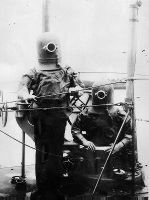
It incorporated a canister containing ‘Oxylithe’, a special chemical which when breathed upon gave off oxygen and absorbed carbon dioxide. In 1903 to 1907 the Swiss Professor Georges Jaubert, invented Oxylithe, which is a form of sodium peroxide (Na2O2) or sodium dioxide (NaO2) also called “S” and “PS”. As it absorbs carbon dioxide, it emits oxygen. It consisted of a hard helmet and a belted, long-sleeved tunic. Inside the tunic was a canister of sodium peroxide which gave off oxygen while absorbing carbon dioxide. The use of sodium peroxide was an interesting choice as it had a tendency to ignite when wet. The equipment was very bulky and doubts existed about the wearer’s ability to exit through the upper hatch of a submarine when wearing it. Despite its workable design, the Hall-Rees apparatus was phased out – one for each crew member simply took up too much room in a cramped submarine.
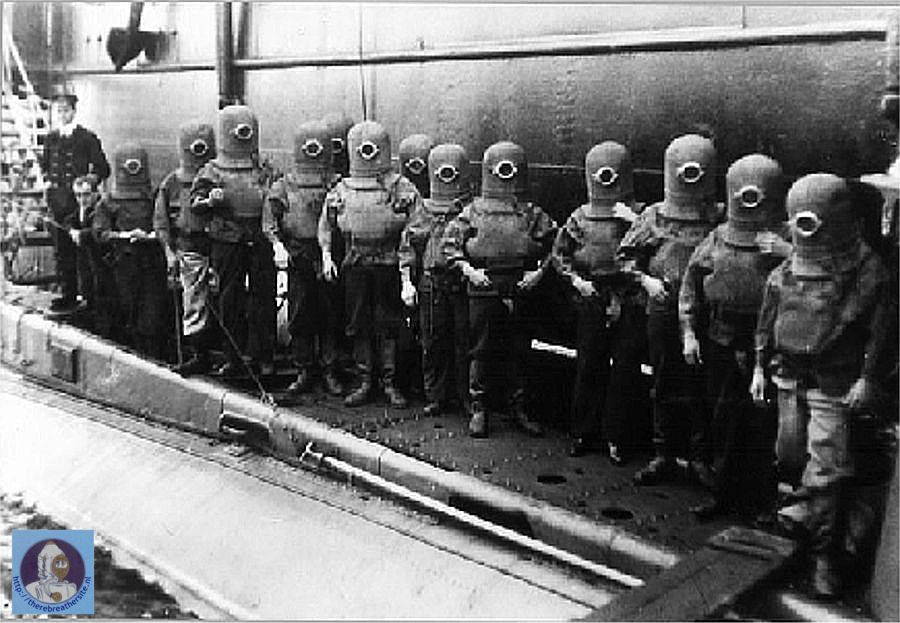
The apparatus can be seen that in outward form it was like the original Siebe open diving helmet and Jacket. The apparatus can be seen with a larger smoke helmet , with the oxylithe chamber fitted outside the dress, to allow radiation of heat. The fact that oxylithe dispensed with the use of compressed oxygen for the main supply of gas probably influenced the authorities in adopting the apparatus and it was installed in submarines of the Royal Navy, and, to a smaller extend in those of several other navies. With some units it can be seen that the jacket is fitted with two small cylinders of compressed air or oxygen- the larger for keeping the water inside the hood down to a safe level, the smaller for inflating a buoyancy chamber inside the jacket when the wearer reached the surface, so the he could safely open the window of his helmet and breathe fresh air without the risk of sinking.
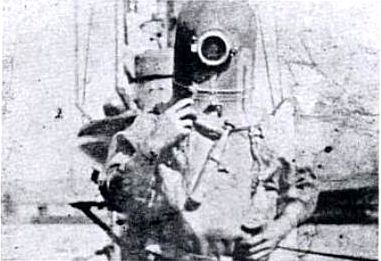
Sydney Stuart Hall and Oswald Rees residing on HMS Mercury patented their invention in 1908 with US 896447
Professor Georges Francois Jaubert was a Swiss chemist who invented Oxylithe and has numerous patents on his name. Patents related to the oxylithe are for example GB 1907 patent 17242
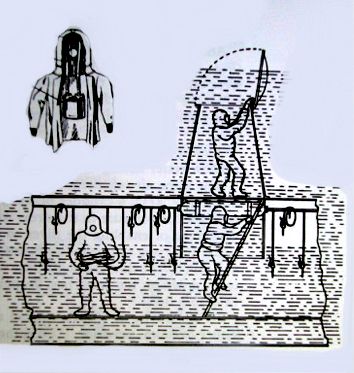
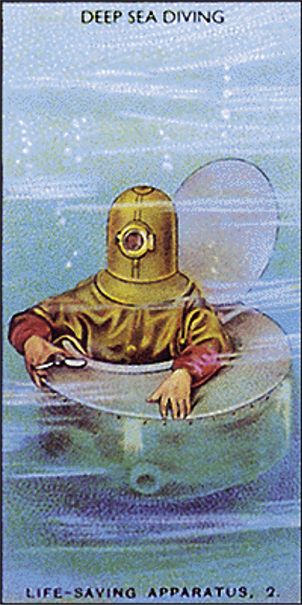
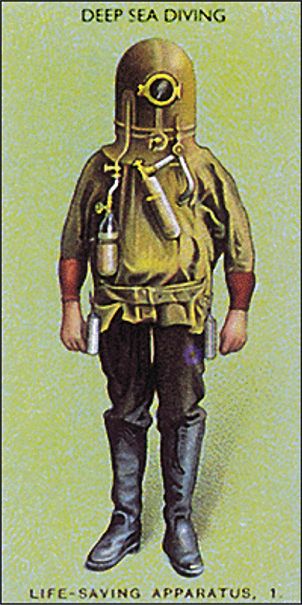

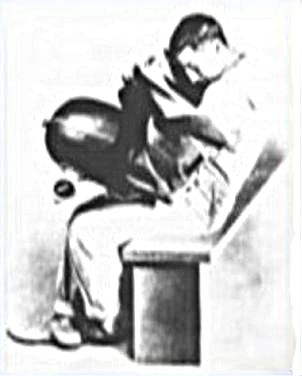
Much more information in great detail here: https://www.divingheritage.com/hall-rees-davis.htm

Therebreathersite was founded by Jan Willem Bech in 1999. After a diving career of many years, he decided to start technical diving in 1999. He immediately noticed that at that time there was almost no website that contained the history of closed breathing systems. The start for the website led to a huge collection that offered about 1,300 pages of information until 2019. In 2019, a fresh start was made with the website now freely available online for everyone. Therebreathersite is a source of information for divers, researchers, technicians and students. I hope you enjoy browsing the content!
